 The Egyptians made sarcophagi from cypress, the Phoenicians and the Cretans used it to build houses and ships, and the Greeks used it to carve statues of their gods. The cypress tree has been an integral part of Western civilization for centuries. The tree is named after the Greek island of Cyprus, on which cypress trees grow in abundance, and where they were worshipped.
The Egyptians made sarcophagi from cypress, the Phoenicians and the Cretans used it to build houses and ships, and the Greeks used it to carve statues of their gods. The cypress tree has been an integral part of Western civilization for centuries. The tree is named after the Greek island of Cyprus, on which cypress trees grow in abundance, and where they were worshipped.
Early civilizations not only used the wood to make life more comfortable, they also steam distilled the branches and needles to extract oil from the wood, and used the oil medicinally. The Greeks valued cypress oil for the calming effect that it has on the nervous system, as well as for its ability to relieve and eliminate asthma symptoms and other respiratory troubles.
Through the years cypress oil has been credited with helping to alleviate symptoms of bronchitis, nosebleeds, fluid retention and muscle cramps, and the oil also has the ability to increase circulation, which is a vital factor in reducing cellulite. Cellulite is where the cells in the fatty layer under the skin are attacked by toxic lymph. If the lymphatic system is sluggish and circulation is poor, cellulite often appears on the upper arms, buttocks, and thighs as well as other areas of the body.
Anyone can develop cellulite. Excess weight is not the villain, but excess estrogen does play a role, and so does a weak lymphatic system. If the lymphatic system and the immune system are not strong enough to get rid of them, toxins are pushed to areas of the body where they will do the least harm. The result of that internal action is called cellulite.
When an alkaline detoxification diet is combined with aromatherapy treatments, cellulite begins to break down. Cypress essential oil is one of the main oils used in successful aromatherapy treatments. Cypress oil is combined with other essential oils such as clary sage, lavender, juniper, and lemongrass oils because they eliminate fluid retention. The blended cypress oil can be applied directly in a massage, diluted in a bath, and infused in a seaweed wrap during spa treatments.
Cypress oil is also used to treat varicose and broken veins and congested and oily skin. When the oil is blended with pine, marjoram, sandalwood, rosemary, frankincense and citrus oils in aromatherapy oil treatments, cypress oil can be very effective in assisting with emphysema, diarrhea, cramps, rheumatism, sweaty feet, whooping cough, and uncomfortable symptoms of menopause.

 Thyme oil has a long and fascinating history of use. The Egyptians would never have been able to embalm their departed loved ones so successfully if it weren’t for thyme oil. The early Romans identified
Thyme oil has a long and fascinating history of use. The Egyptians would never have been able to embalm their departed loved ones so successfully if it weren’t for thyme oil. The early Romans identified 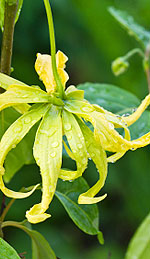 The flowers of the small ylang-ylang tree have been used in Asia for centuries to express love in marriage ceremonies.The tree grows in Malaysia, Madagascar, the Philippines, and the Reunion Islands. The name means ‘Flower of Flowers’ and those flowers can be pink, yellow, and mauve. The best oil usually comes from the yellow flowers, which are picked early in the day in early summer.
The flowers of the small ylang-ylang tree have been used in Asia for centuries to express love in marriage ceremonies.The tree grows in Malaysia, Madagascar, the Philippines, and the Reunion Islands. The name means ‘Flower of Flowers’ and those flowers can be pink, yellow, and mauve. The best oil usually comes from the yellow flowers, which are picked early in the day in early summer.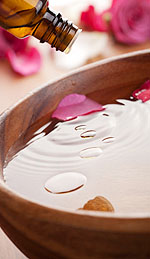 The rich perfumed fragrance of the rose is unmistakable. The aroma of the rose has enamored cultures around the world for centuries, rivaling even the renown of the prized
The rich perfumed fragrance of the rose is unmistakable. The aroma of the rose has enamored cultures around the world for centuries, rivaling even the renown of the prized 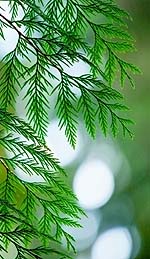 Cedarwood has been used for over 5,000 years for many good reasons. The ancient Sumerians as well as the Egyptians believed cedarwood could connect the body with the mind in rituals and ceremonies. The Egyptians also believed that the body should be embalmed in cedarwood so the journey to the other side was a smooth transition.
Cedarwood has been used for over 5,000 years for many good reasons. The ancient Sumerians as well as the Egyptians believed cedarwood could connect the body with the mind in rituals and ceremonies. The Egyptians also believed that the body should be embalmed in cedarwood so the journey to the other side was a smooth transition.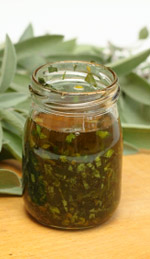 It’s hard to identify the age of nature’s medicine chest. Plants and trees have been healing aches and pains as well as wounds and scratches for centuries. Oils from the plant kingdom have balanced the central nervous system, healed the intestinal system, and stimulated the circulatory and respiratory systems long before people wrote about those accomplishments.
It’s hard to identify the age of nature’s medicine chest. Plants and trees have been healing aches and pains as well as wounds and scratches for centuries. Oils from the plant kingdom have balanced the central nervous system, healed the intestinal system, and stimulated the circulatory and respiratory systems long before people wrote about those accomplishments. 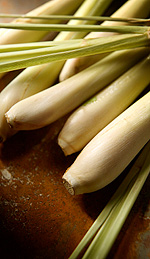 In India, Ayurvedic medicine is considered the great great-grandfather of all natural medical knowledge, because the information regarding the chemical compounds that are used to treat a plethora of illnesses and disease are founded in Ayurvedic thought.
In India, Ayurvedic medicine is considered the great great-grandfather of all natural medical knowledge, because the information regarding the chemical compounds that are used to treat a plethora of illnesses and disease are founded in Ayurvedic thought.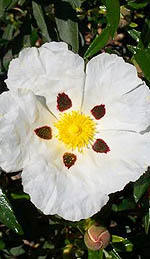 Labdanum is one of those shrubs that makes ancient history a truly intriguing tale. Mediterranean sheep and goat herders were the first group to figure out what to do with the sticky resin from the bushes. They collected the resin by combing the thighs and beards of goats that grazed on the cistus shrubs. They developed wooden rakes with a double row of wooden thongs to sweep the shrubs so the resin could be collected and then extracted.
Labdanum is one of those shrubs that makes ancient history a truly intriguing tale. Mediterranean sheep and goat herders were the first group to figure out what to do with the sticky resin from the bushes. They collected the resin by combing the thighs and beards of goats that grazed on the cistus shrubs. They developed wooden rakes with a double row of wooden thongs to sweep the shrubs so the resin could be collected and then extracted. The aborigines of Australia have been using tea tree as a medicine for over 30,000 years. They’ve long known that it can heal wounds, stop infections, treat burns, moisturize dry skin, and give the body a little extra energy on a hunt. When Captain Cooke and his crew arrived in 1770 they dubbed it the “tea tree”. Cooke and his men made tea out of the leaves, and later mixed it with spruce leaves and made a beer that kept the men happy as well as a little tipsy.
The aborigines of Australia have been using tea tree as a medicine for over 30,000 years. They’ve long known that it can heal wounds, stop infections, treat burns, moisturize dry skin, and give the body a little extra energy on a hunt. When Captain Cooke and his crew arrived in 1770 they dubbed it the “tea tree”. Cooke and his men made tea out of the leaves, and later mixed it with spruce leaves and made a beer that kept the men happy as well as a little tipsy.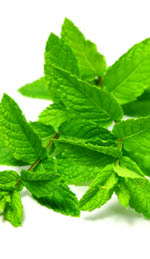 The spearmint plant holds a prominent place in human history. One Greek myth about spearmint may be the origin of the Western name of this plant. Hades, god of the underworld, attempted to seduce Minthe, a nymph. However, his wife, Persephone, did not appreciate his action, and so transformed the nymph into the fragrant spearmint plant. In modern times, spearmint is just one name for this popular flavoring for candy, ice cream, tobacco, and liquor. Some other common names are: Green Mint, Garden Mint, Sage of Bethlehem, Spire Mint, Lamb Mint, Bethlehem Sage, Pea Mint, Mackerel Mint, and Our Lady’s Mint.
The spearmint plant holds a prominent place in human history. One Greek myth about spearmint may be the origin of the Western name of this plant. Hades, god of the underworld, attempted to seduce Minthe, a nymph. However, his wife, Persephone, did not appreciate his action, and so transformed the nymph into the fragrant spearmint plant. In modern times, spearmint is just one name for this popular flavoring for candy, ice cream, tobacco, and liquor. Some other common names are: Green Mint, Garden Mint, Sage of Bethlehem, Spire Mint, Lamb Mint, Bethlehem Sage, Pea Mint, Mackerel Mint, and Our Lady’s Mint.